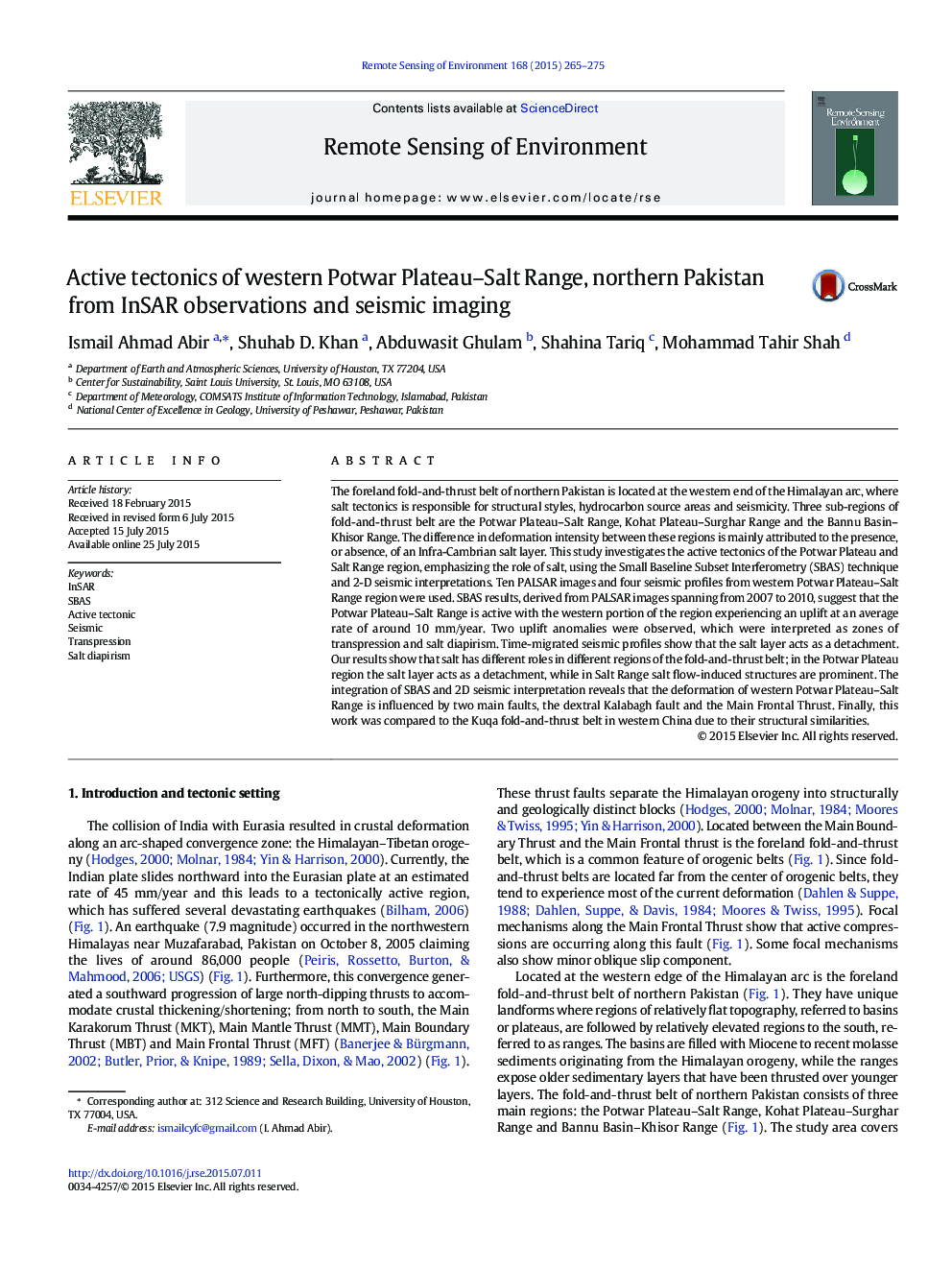| کد مقاله | کد نشریه | سال انتشار | مقاله انگلیسی | نسخه تمام متن |
|---|---|---|---|---|
| 4458821 | 1621232 | 2015 | 11 صفحه PDF | دانلود رایگان |

• Salt acts as a detachment in Potwar and salt diapirism is prominent in Salt Range.
• Integration of InSAR and seismic data helped to map the deformation in this region.
• InSAR data from 2007–2010 suggests that Salt Range underwent uplift up to 15 mm/year.
• Uplifted zones from the InSAR data were related to transpression and salt diapirism.
• Differential loading may be the main driving force for the salt moving to the south.
The foreland fold-and-thrust belt of northern Pakistan is located at the western end of the Himalayan arc, where salt tectonics is responsible for structural styles, hydrocarbon source areas and seismicity. Three sub-regions of fold-and-thrust belt are the Potwar Plateau–Salt Range, Kohat Plateau–Surghar Range and the Bannu Basin–Khisor Range. The difference in deformation intensity between these regions is mainly attributed to the presence, or absence, of an Infra-Cambrian salt layer. This study investigates the active tectonics of the Potwar Plateau and Salt Range region, emphasizing the role of salt, using the Small Baseline Subset Interferometry (SBAS) technique and 2-D seismic interpretations. Ten PALSAR images and four seismic profiles from western Potwar Plateau–Salt Range region were used. SBAS results, derived from PALSAR images spanning from 2007 to 2010, suggest that the Potwar Plateau–Salt Range is active with the western portion of the region experiencing an uplift at an average rate of around 10 mm/year. Two uplift anomalies were observed, which were interpreted as zones of transpression and salt diapirism. Time-migrated seismic profiles show that the salt layer acts as a detachment. Our results show that salt has different roles in different regions of the fold-and-thrust belt; in the Potwar Plateau region the salt layer acts as a detachment, while in Salt Range salt flow-induced structures are prominent. The integration of SBAS and 2D seismic interpretation reveals that the deformation of western Potwar Plateau–Salt Range is influenced by two main faults, the dextral Kalabagh fault and the Main Frontal Thrust. Finally, this work was compared to the Kuqa fold-and-thrust belt in western China due to their structural similarities.
Journal: Remote Sensing of Environment - Volume 168, October 2015, Pages 265–275